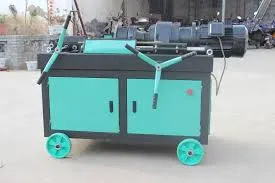
-
 Afrikaans
Afrikaans -
 Albanian
Albanian -
 Amharic
Amharic -
 Arabic
Arabic -
 Armenian
Armenian -
 Azerbaijani
Azerbaijani -
 Basque
Basque -
 Belarusian
Belarusian -
 Bengali
Bengali -
 Bosnian
Bosnian -
 Bulgarian
Bulgarian -
 Catalan
Catalan -
 Cebuano
Cebuano -
 Corsican
Corsican -
 Croatian
Croatian -
 Czech
Czech -
 Danish
Danish -
 Dutch
Dutch -
 English
English -
 Esperanto
Esperanto -
 Estonian
Estonian -
 Finnish
Finnish -
 French
French -
 Frisian
Frisian -
 Galician
Galician -
 Georgian
Georgian -
 German
German -
 Greek
Greek -
 Gujarati
Gujarati -
 Haitian Creole
Haitian Creole -
 hausa
hausa -
 hawaiian
hawaiian -
 Hebrew
Hebrew -
 Hindi
Hindi -
 Miao
Miao -
 Hungarian
Hungarian -
 Icelandic
Icelandic -
 igbo
igbo -
 Indonesian
Indonesian -
 irish
irish -
 Italian
Italian -
 Japanese
Japanese -
 Javanese
Javanese -
 Kannada
Kannada -
 kazakh
kazakh -
 Khmer
Khmer -
 Rwandese
Rwandese -
 Korean
Korean -
 Kurdish
Kurdish -
 Kyrgyz
Kyrgyz -
 Lao
Lao -
 Latin
Latin -
 Latvian
Latvian -
 Lithuanian
Lithuanian -
 Luxembourgish
Luxembourgish -
 Macedonian
Macedonian -
 Malgashi
Malgashi -
 Malay
Malay -
 Malayalam
Malayalam -
 Maltese
Maltese -
 Maori
Maori -
 Marathi
Marathi -
 Mongolian
Mongolian -
 Myanmar
Myanmar -
 Nepali
Nepali -
 Norwegian
Norwegian -
 Norwegian
Norwegian -
 Occitan
Occitan -
 Pashto
Pashto -
 Persian
Persian -
 Polish
Polish -
 Portuguese
Portuguese -
 Punjabi
Punjabi -
 Romanian
Romanian -
 Russian
Russian -
 Samoan
Samoan -
 Scottish Gaelic
Scottish Gaelic -
 Serbian
Serbian -
 Sesotho
Sesotho -
 Shona
Shona -
 Sindhi
Sindhi -
 Sinhala
Sinhala -
 Slovak
Slovak -
 Slovenian
Slovenian -
 Somali
Somali -
 Spanish
Spanish -
 Sundanese
Sundanese -
 Swahili
Swahili -
 Swedish
Swedish -
 Tagalog
Tagalog -
 Tajik
Tajik -
 Tamil
Tamil -
 Tatar
Tatar -
 Telugu
Telugu -
 Thai
Thai -
 Turkish
Turkish -
 Turkmen
Turkmen -
 Ukrainian
Ukrainian -
 Urdu
Urdu -
 Uighur
Uighur -
 Uzbek
Uzbek -
 Vietnamese
Vietnamese -
 Welsh
Welsh -
 Bantu
Bantu -
 Yiddish
Yiddish -
 Yoruba
Yoruba -
 Zulu
Zulu
Innovative Designs of Thread Rolling Machines and Their Operational Efficiency
Understanding the Working Mechanism of Famous Thread Rolling Machines
Thread rolling machines are specialized equipment designed to create threads on metal parts through a unique process that enhances durability and performance. The machine operates on the principle of deforming material, instead of cutting it, which leads to better structural integrity and reduces waste. In this article, we will explore the functionality, applications, advantages, and maintenance of famous thread rolling machines, which have revolutionized the manufacturing industry.
What is Thread Rolling?
Thread rolling is a cold-forming process that creates a thread profile by deforming the material instead of removing it, as is done in traditional machining. This method involves the use of rollers that exert immense pressure on the workpiece to form the required thread without chipping away any material. The result is a strong, precise thread with a fine finish. The machine typically comprises several key components, including rollers, a workpiece holder, and a hydraulic system that applies the necessary force.
The Working Mechanism
A famous thread rolling machine operates through a series of well-coordinated steps. First, the operator selects the correct roller configuration based on the desired thread dimensions. The workpiece, usually made of steel or aluminum, is then inserted into the machine and securely held in place.
Once everything is set up, the hydraulic system is activated. The rollers rotate and move toward the workpiece, making contact to exert high pressure. As the rollers rotate, they deform the material, gradually forming the thread shape. This process can be done in several passes, depending on the required depth and intricacy of the threads.
One of the primary advantages of thread rolling is that it significantly improves the mechanical properties of the metal. The process hardens the surface through cold working, leading to threads that are more resistant to wear, fatigue, and corrosion.
Applications of Thread Rolling Machines
Thread rolling machines are crucial in various industries, including automotive, aerospace, electronics, and construction. Some common applications include
1. Manufacturing Fasteners These machines are widely used to produce bolts, screws, and nuts, vital components in assembly and construction.
famous thread rolling machine working

3. Medical Equipment Precision threads are needed in surgical instruments and implantable devices, where performance and reliability are paramount.
4. Electronics Fine threads are often required in the assembly of electronic components, ensuring secure connections.
Advantages of Thread Rolling Machines
There are several advantages to using thread rolling machines, which contribute to their popularity in manufacturing
- Improved Mechanical Properties As previously mentioned, thread rolling increases the fatigue strength of the metal, leading to longer-lasting products.
- Material Efficiency Unlike cutting methods that create waste, thread rolling deforms metal, resulting in minimal waste, which is advantageous for manufacturers looking to reduce costs.
- Fine Finish and Precision The process creates threads with high dimensional accuracy and a smooth finish, which is often better than traditional machined threads.
- Low Tool Wear Since no cutting tools are used, wear and tear on machinery are significantly reduced, leading to lower maintenance costs.
Maintenance of Thread Rolling Machines
Proper maintenance of thread rolling machines is essential to ensure their longevity and optimal performance. Routine checks of the hydraulic system, rollers, and the alignment of the workpiece are crucial. Operators should regularly clean the machine to prevent the accumulation of debris and chips that may interfere with the operation. Additionally, periodic lubrication of moving parts will help reduce friction and prolong the machine’s effective life.
In conclusion, famous thread rolling machines are invaluable in modern manufacturing, offering a blend of efficiency, quality, and strength in producing threaded components. As industries continue to evolve, these machines will undoubtedly remain at the forefront of innovation, providing solutions that meet the increasing demands for durability and precision in products. Understanding their working mechanism, applications, and maintenance requirements is crucial for operators and manufacturers alike as they strive to optimize production processes and deliver high-quality components to their customers.
